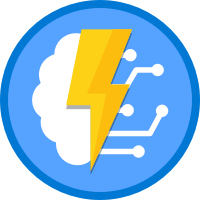What if you could write your code and have it run in reaction to events or on a schedule, rather than having to develop and manage a full application or the infrastructure to perform it?
Azure Functions is a “serverless” service that enables you to write only the code you need.
To execute code with functions, you can use HTTP requests, webhooks, cloud service events, and a schedule. You can use whatever programming language you choose. With consumption-based payment, you only pay for the time your code runs and Azure scales to meet your demands.
Azure Function
Azure Function is a serverless computed solution that enables customers to run event-triggered code without having to manage or deploy infrastructure. It runs a script or code in response to a range of events as a trigger-based service.
Decoupling, high throughput, and reusability may all be done with Azure Functions. We can also use it in production environments because it is more dependable.
Function App allows you to create standalone functions in the Azure function. Using the configured trigger, any function can be called. The Azure portal allows you to create, manage, monitor, and integrate Azure Function inputs and outputs.
For monitoring, the portal offers tools like Application Insights, which allow for real-time state monitoring via invocation logs. The Function App’s app metrics can track the functions.
How does it work?
The Azure Function allows teams to construct event-driven apps that run code in response to system conditions or events. The platform automatically manages all the computing resources required for those operations, allowing DevOps teams to concentrate on developing and delivering features and capabilities.
Azure Functions also allow teams to run custom-written code in JavaScript, C#, Python, or PHP in a containerized environment to connect various services as needed.
Advantages of Azure function
Multiple language support: Create functions in C#, Java, JavaScript, PowerShell, or Python, or create a custom handler to use any language.
Simple Integration: Azure Functions are simple to integrate with other Azure Services without any problem.
Pay only for what you use: You can use Azure Functions on a pay-as-you-go basis. The user is only charged for the services that they use. The amount of monthly executions determines the pricing of Azure services. For the price, simply click on the link.
Executions based on a trigger: The triggers that have been set up are used to run Azure Functions. Triggers such as HTTP, Queue, and Event Hub Triggers, as well as others, are supported. Because it is a trigger-based service, it runs on demand.
Azure Function’s supported languages
Azure Function, which is based on Runtime versions, supports a variety of languages.
- C#, F#, and JavaScript are all supported in Azure Functions 1.x. Functions 1.x, on the other hand, is solely in maintenance mode.
- C# (.NET Core 2.2), JavaScript (Node 8 & 10), F# (.NET Core 2.2), Java 8, PowerShell Core 6, Python 3.7.x, and Typescript are supported by Azure Functions 2.x.
- C# (.NET Core 3.x), JavaScript (Node 8 & 10), F# (.NET Core 3.x), Java (Java 8), PowerShell Core 6, Python 3.7.x, and TypeScript are supported in Azure Functions 3.x (Preview).
Creation of Azure Function App
We can create azure Function in one of two ways: via the Azure portal or via Visual Studio. The following are the steps for creating and deploying Azure Functions:
Through Azure portal
- Click Create a resource, then select Azure Functions App from the Compute section and click Create.
- Create it after you’ve provided all of the necessary information.
Through Visual Studio
- Choose File -> New Project. Choose the Azure Functions project.
- Name, path, Function App version, and Trigger option should all be provided. Click Create.
To publish Azure Functions from Visual Studio, follow these steps:
- Select Publish with a right-click on the project name.
- Provide information such as the name of the resource group, the storage account, and so on. After this, the profile will be ready to publish.
Pricing
The price of an Azure Function App is determined by the execution time and the total number of executions. It also provides a free monthly grant of 1 million requests and monthly resource consumption of 4,00,000 GB-s.
| Meter | Price | Free Grant (Per Month) |
|---|---|---|
| Execution Time* | $0.000016/GB-s | 4,00,000 GB-s |
| Total Executions* | $0.20 per million executions | 1 million executions |
Users can enjoy better performance with the Azure Function Premium package. It is priced in terms of virtual CPUs and gigabytes.
| Meter | Price |
|---|---|
| vCPU duration | vCPU: $0.173 vCPU/hour |
| Memory duration | Memory: $0.0123 GB/hour |
To know more about the price, simply click on the link.
Conclusion
As a result, Azure Functions, like AWS Lambda, operate at the cloud’s edge and are ideal for small apps that can function independently. Therefore, it enables businesses to create dynamic serverless apps based on functions that run at the cloud’s edge without worrying about infrastructure. This frees up teams to concentrate on developing smooth, efficient apps that improve end-user experience and business outcomes.
I hope this blog clarified all of the key concepts surrounding Azure Functions.
In case of any help or query, please contact us or raise a ticket.
